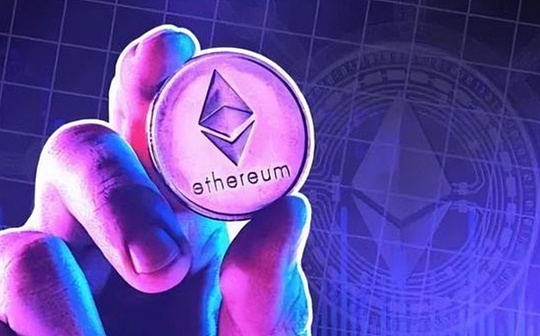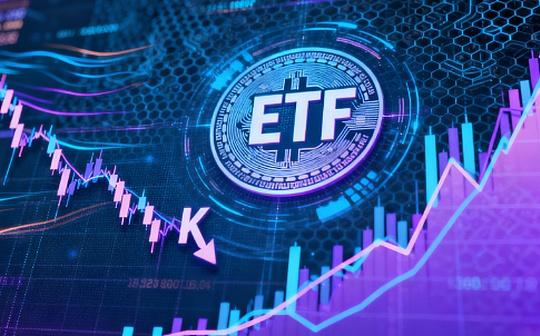
In 2025, the stablecoin market continued to grow rapidly.According to DeFiLlama data, as of May 26, 2025, the total global supply of stablecoins (i.e., market capitalization) has climbed to approximately US$246.382 billion, accounting for approximately 7.04% of the total supply of crypto assets.
This data is up 9.5% compared with the data from the “State Stable Coins Status” report released by Dune and Artemis in March 2025. “In 2024, the total global supply of stablecoins increased to US$225 billion”, indicating the rapid expansion of stablecoins in the crypto asset ecosystem.
According to OKG Research, under the optimistic scenario of countries gradually setting up compliance frameworks for crypto assets and widely adopting stablecoins by institutions and individuals, the global stablecoin market supply is expected to reach US$3 trillion in 2030, monthly on-chain transaction volume reaches US$9 trillion, and the total annual transaction volume may exceed US$100 trillion.
01A big view of the stablecoin market
At present, the stablecoin USDT issued by Tether and the stablecoin USDC issued by Circle are still dominant in the stablecoin market.According to data released by CoinGecko in May 2025, the two stablecoins supply together account for 86.06% of the overall supply of the stablecoin market.
USDT
In May 2025, the total supply of USDT exceeded US$150 billion for the first time, reaching US$150.663 billion, accounting for 62% of all stablecoins.Its growth is mainly based on payment demand in emerging markets, especially on TRON’s transactions, with an average daily trading volume of nearly $30 billion.
In April 2025, Tether CEO Paolo Ardoino posted a statement saying that the number of users using USDT increased by 13% in the first quarter of 2025.At present, USDT’s application center is gradually shifting to the P2P remittance market, and its institutional adoption is on the decline.
USDC
Circle’s USDC accounts for nearly 25% of the stablecoin market, making it the second largest stablecoin supply in the market.
USDC has established application cooperation with currency payment institutions such as Visa and Mastercard through monthly public audit reports through third-party institutions, and has made mainstream DeFi protocols such as MakerDAO, Compound, Aave, and Curve.
Emerging stablecoins are gradually rising
According to the “2025 Stablecoin Report” released by Dune and Artemis, in addition to the two stablecoin giants, USDT and USDC, algorithmic stablecoins are also maintaining active applications in the DeFi ecosystem. Third-generation stablecoins (such as USDe) that adopt a hybrid mortgage model are rewriting the market structure.
The emerging stablecoins that have received widespread attention in the market recently include: USDE issued by Ethena Labs, whose total supply has increased to US$7.082 billion in May 2025, becoming the third largest stablecoin in the world in supply; the total supply of USD1, a stablecoin issued by World Liberty Financial, a DeFi platform under the Trump family, in March 2025, has rapidly expanded to US$2.133 billion; the total supply of USD0 has reached US$641 million.
02Application of stablecoins in Ethereum
In the Ethereum ecosystem, stablecoins play a key role in trading and lending scenarios.They can not only serve as the underlying assets involved in decentralized finance (DeFi) activities, but also play an important role in promoting overall Ethereum transaction volume and asset liquidity.
Trading scenario:
According to Techinasia, in April 2025, stablecoin transactions on Ethereum reached US$908 billion.In this growth trend, USDC has performed well, with trading volumes exceeding $500 billion in the past six months.Other stablecoins, such as DAI, also show active trading trends.
Lending scenarios:
DeFi protocols such as Aave and Compound on Ethereum support lending services for a variety of stablecoins.Users can deposit USDT, USDC or DAI for interest or borrow other assets with these stablecoins.For example, Aave provides collateral services with an annualized rate of return (APY) up to 14%, and Compound provides an annualized rate of return for related services with an annualized rate of return.
Payment scenario:
In 2021, Visa announced the use of USDC for payment settlement on Ethereum, becoming the first major payment network to use crypto assets for settlement.
Stablecoin payment platform Alchemy Pay has established a partnership with Ethereum Layer 2 network ZKFair, allowing users to pay Gas fees using USDC, allowing more users to easily purchase assets.
Practice in cross-border settlement:
StraitsX has issued the Singapore dollar stablecoins XSGD and the Indonesian rupiah stablecoin XIDR on Ethereum and Zilliqa, aiming to address the high cost and inefficiency issues in cross-border payments.
A case of combining Layer2 solutions with stablecoins:
-
The multi-chain version of USDT, a multi-chain version of USDT launched by Tether and LayerZero, is based on LayerZero’s Omnichain Fungible Token (OFT) standard, which realizes cross-chain transfers without intermediary bridging or packaging assets, and improves the liquidity and availability of stablecoins.
-
MStableChain proposes a system that supports multiple stablecoins as transaction fees, aiming to provide stable transaction fees and flexible payment options.The system ensures compatibility with Ethereum virtual machines (EVMs) through multi-currency units and multi-type RPC mechanisms, facilitating large-scale adoption.
03Regulatory Compliance Examples
-
Hong Kong, China:On May 21, 2025, the Legislative Council of the Hong Kong Special Administrative Region of China passed the “Stablecoin Bill”, marking that Hong Kong, China, became the first jurisdiction in the world to establish a full-chain regulatory system for fiat to stablecoins.
-
USA:As of May 22, 2025, the GENIUS Act, the US stablecoin, has entered the amendment process.The core of the GENIUS Act includes key contents such as issuance eligibility restrictions, reserve requirements, compliance obligations, user protection and international applicability.The bill clearly stipulates that issuers must fully support their stablecoins issued with equivalent high-liquidity assets to ensure that users can redeem them at any time.At the same time, in order to protect the interests of coin holders, if the issuing institution goes bankrupt, its assets should be used to repay user funds first.In addition, issuers must strictly abide by compliance obligations such as anti-money laundering (AML) and anti-terrorism financing (CFT) to prevent stablecoins from being used for illegal purposes.
-
EU:The MiCA regulatory framework will officially come into effect on December 31, 2024.The stablecoin issuer is required to reserve assets transparent and auditable.USDC was first adopted by Worldpay and other institutions because it was the first to obtain MiCA certification.








